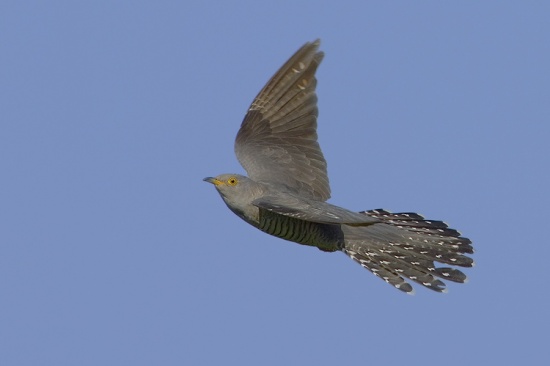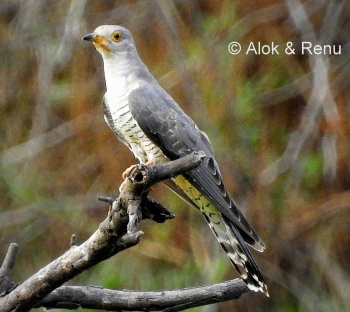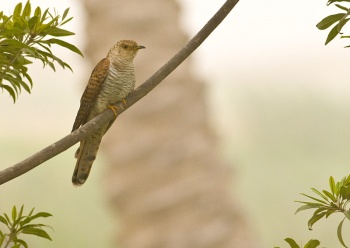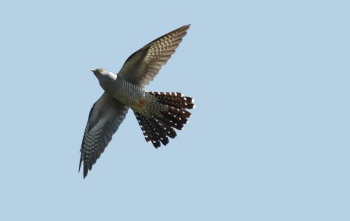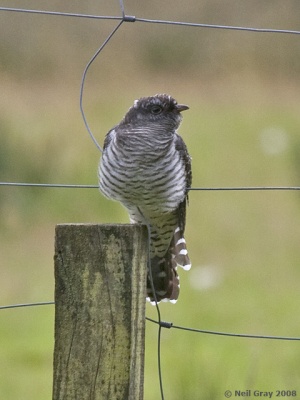Alternative name: Eurasian Cuckoo
- Cuculus canorus
Identification
Male:
- Bluish-grey upperparts, head and upper breast
- White belly with dark barring
- Yellow feet, iris and bill base
Female - two colour morphs
- Grey: similar to male but has a buffish tinge to upper chest
- Brown: rufous brown upperparts and breast
In both sexes, the underwing shows a pattern of pale, dark, white, dark from front to back, and the tail feathers show a pattern or white spots or bands.
Distribution
Common and very widespread throughout the region. Breeds in the British Isles and mainland Europe from Iberia east to the Urals and Caspian. In the north breeds throughout Scandinavia, except the extreme north coast and north to about 66° N in Russia. In the south breeds along north coast of Mediterranean and on the Balearics, Corsica, Sardinia and Sicily, and throughout most of Turkey. Breeds patchily in the Middle East and in North Africa where confined to parts of the North-West. Has bred on Malta and Cyprus.
Strictly migratory, leaving Europe in late-July to early September to winter in tropical Africa and returning mid-April to May although wintering in Europe has been recorded.
Vagrant north to Iceland and Faroes, west to Azores, Madeira, Canary Islands and Cape Verde Islands.
Taxonomy
Subspecies
There are 4 subspecies[1]:
- C. c. bangsi: possibly shows distinctly rufous breast in female.
- Iberian Peninsula, Balearic Islands and north-western Africa; winters in Africa
- C. c. canorus:
- C. c. subtelephonus: is similar in size to nominate but has narrower bars below.
- C. c. bakeri:
Habitat
A wide variety of habitats with trees and bushes including open woodland, moorland, forest edge and clearings, cultivated land and grassland, reedbeds and marshes.
Behaviour
It is a bird of open land.
Movement
Sits horizontally on wires or exposed branches.
Direct flight, with wings coming below the horizontal
Diet
Its food is insects, with hairy caterpillars, which are distasteful to many birds, being a specialty.
Breeding
The female lays an egg which mimicks the eggs of the host species. The hatchling pushes the eggs and young of the host out of the nest.
Vocalisation
Recording by Alok Tewari
Keoladeo National Park, Bharatpur, Rajasthan, India, June-2017
Call given by one bird. Brief calls by Jacobin Cuckoo, Red-wattled Lapwing, Asian Pied Starling and Western Koel, too are heard, in the BG.
References
- Clements, J. F., T. S. Schulenberg, M. J. Iliff, D. Roberson, T. A. Fredericks, B. L. Sullivan, and C. L. Wood. 2016. The eBird/Clements checklist of birds of the world: v2016, with updates to August 2016. Downloaded from http://www.birds.cornell.edu/clementschecklist/download/
- Collins Bird Guide ISBN 0 00 219728 6
- BF Member observations
Recommended Citation
- BirdForum Opus contributors. (2024) Common Cuckoo. In: BirdForum, the forum for wild birds and birding. Retrieved 25 April 2024 from https://www.birdforum.net/opus/Common_Cuckoo
External Links
GSearch checked for 2020 platform.1




